Discover 11 hidden attractions, cool sights, and unusual things to do in Shizuoka (Japan). Don't miss out on these must-see attractions: Miho no Matsubara, IAI Stadium Nihondaira, and Kunōzan Tōshō-gū. Also, be sure to include Katayama temple ruins in your itinerary.
Below, you can find the list of the most amazing places you should visit in Shizuoka (Shizuoka).
Table of Contents
Miho no Matsubara
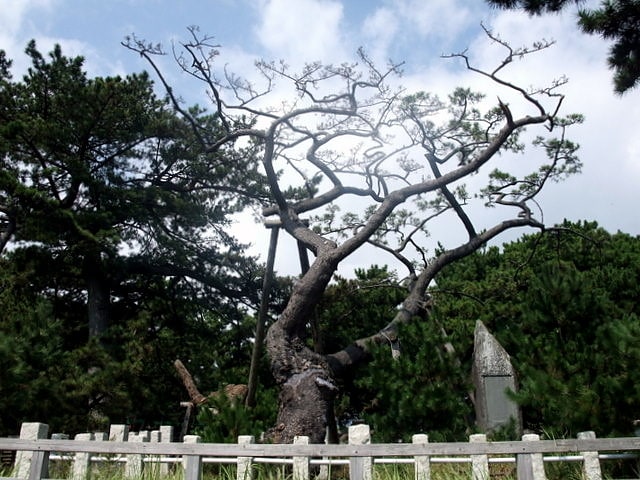
Also known as: 三保の松原
Pine-fringed beach with Mount Fuji views. Miho no Matsubara is a scenic area on the Miho Peninsula in Shimizu Ward of Shizuoka City, Japan. Its seven-kilometre seashore is lined with pine trees. It is the location of the legend upon which the Noh drama Hagoromo is based; on the second Saturday and Sunday of October, the city of Shizuoka holds a Hagoromo Festival and a performance of the Noh drama takes place near the pine tree of the legend.
It was designated as a National Places of Scenic Beauty of Japan in 1922. In 2013 the pine groves were added to the World Heritage List as part of the Fujisan Cultural Site.[1]
Address: Miho Shimizu-ku, 424-0901 Shizuoka
IAI Stadium Nihondaira

Also known as: 静岡市清水日本平運動公園球技場
Stadium in Shizuoka, Japan. IAI Stadium Nihondaira is a football stadium in Shimizu-ku, Shizuoka, Japan. It is currently mostly used for football matches and has been the home stadium of the J-League's Shimizu S-Pulse since 1992. The stadium holds 20,248 people and was opened in 1991. In November 2008 a four-year naming deal effective from March 2009 was announced expected to earn S-Pulse 360,000,000 yen. The stadium was known as The Outsourcing Stadium until February 2013. As Shizuoka City and Shimizu S-Pulse reached a 5-year deal with IAI Corporation, a manufacturer industrial robots, the stadium has been renamed as IAI Stadium Nihondaira effective 1 March 2013. This sponsorship deal was extended a further five years in 2018.[2]
Address: 3880-1 Muramatsu, Shimizu-ku, 424-0926 Shizuoka
Kunōzan Tōshō-gū
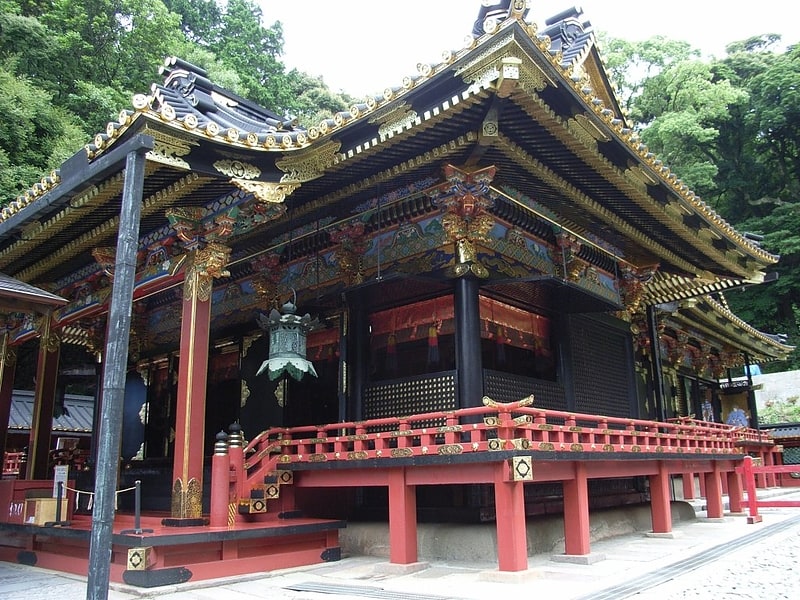
Also known as: 久能山東照宮
Historical Shinto shrine with festivals. The Kunōzan Tōshō-gū is a Shintō shrine in Suruga-ku in the city of Shizuoka in Shizuoka Prefecture, Japan. It is the original burial place of the first shōgun of the Tokugawa shogunate, Tokugawa Ieyasu, and is thus the oldest of the Tōshō-gū shrines in the country. The main festival of the shrine is held annually on April 17, although its spring festival on February 17–18 is a larger event.[3]
Address: 390 Negoya Suruga-ku, 422-8011 Shizuoka
Katayama temple ruins

The Katayama temple ruins is an archaeological site with the ruins of a late Nara period Buddhist temple located in the Oya neighborhood of Suruga-ku of the city of Shizuoka, Japan. The temple no longer exists, but the ruins were designated as a National Historic Site in 1965.[4]
Toro Archaeological Site
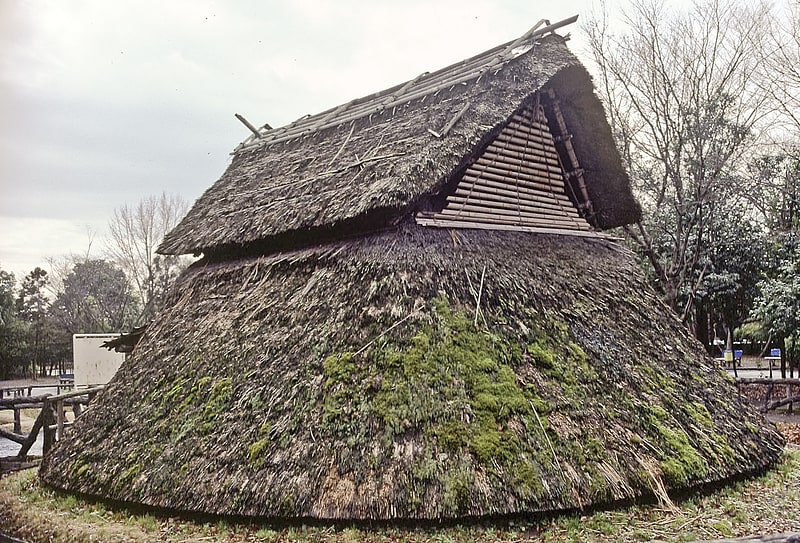
Also known as: 登呂遺跡
Historical landmark in Shizuoka, Japan. Toro is an archaeological site in Suruga Ward in Shizuoka City, 130 kilometres southwest of Tokyo, Japan. The site contains the ruins of a settlement which dates to the 1st century CE, in the late Yayoi period. Discovered in 1943, it was excavated from 1947 to 1948 and designated a Special Historic Site of Japan in 1952. Toro is also the name of the area surrounding it in the Japanese addressing system.[5]
Shizuoka Prefectural Museum of Art
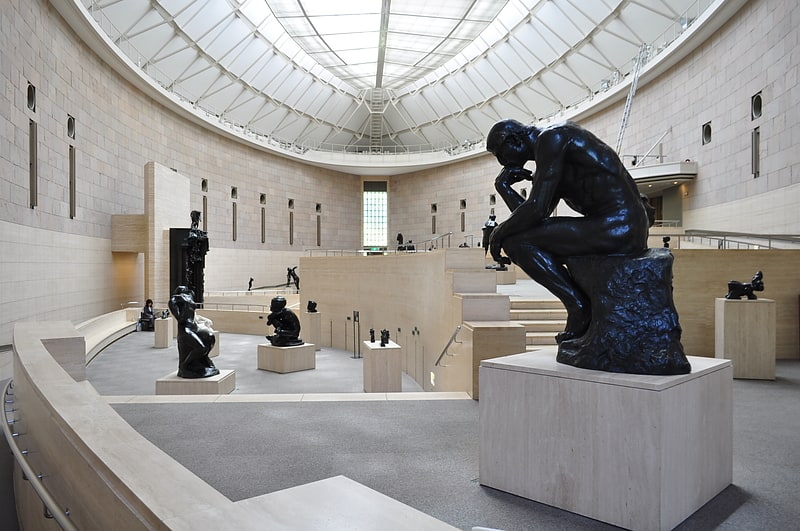
Also known as: 静岡県立美術館
Museum in Shizuoka, Japan. The Shizuoka Prefectural Museum of Art is a prefectural museum in Shizuoka City, Japan.[6]
Address: 53-2 Yada, Suruga-ku, 422-8002 Shizuoka
Nihondaira Ropeway
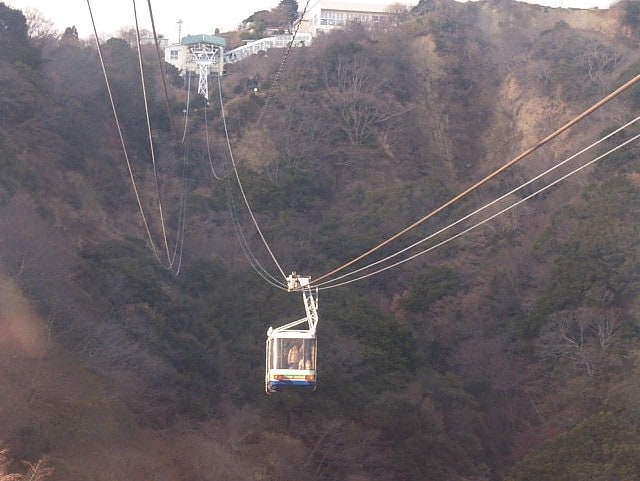
Also known as: 日本平ロープウェイ
The Nihondaira Ropeway is Japanese aerial lift line in the city of Shizuoka in Shizuoka Prefecture, operated by Shizuoka Railway. Opened in 1967, the line climbs Nihondaira, a hill with views of the city, Suruga Bay, and Mount Fuji. The line does not accept LuLuCa, a smart card ticketing system by Shizutetsu.[7]
Shizuhatagayama Kofun

Also known as: 賤機山古墳
Historical landmark in Shizuoka, Japan. Shizuhatayama Kofun is a dome-shaped kofun burial mound located within the grounds of the Shizuoka Sengen Shrine complex in Aoi-ku, Shizuoka, Japan. in the Tōkai region of Japan. The site was designated a National Historic Site of Japan in 1953.[8]
Nihondaira

Also known as: 日本平
Scenic lookout point with Mt. Fuji views. Nihondaira is a scenic area located in Shimizu-ku, Shizuoka, Japan.
A plateau at the centre of Shizuoka city, with a maximum altitude of 308 metres (1,010 ft), Nihondaira is famous for its views of Mount Fuji, the Izu Peninsula, the Japanese Southern Alps, Shimizu Port, and Suruga Bay. It was selected by the Tokyo Nichi Nichi Shimbun and Osaka Mainichi Shimbun as one of the top 100 Landscapes of Japan in 1927 and a National Place of Scenic Beauty of Japan in 1954.
The Nihondaira Ropeway connects Nihondaira to Kunōzan Tōshō-gū in 5 minutes. The area lends its name to the home stadium of J.League football team Shimizu S-Pulse, who play at Nihondaira Stadium.[9]
Address: 4046-1 Muramatsu Shimizu-ku, 424-0926 Shizuoka
Suruga-ku
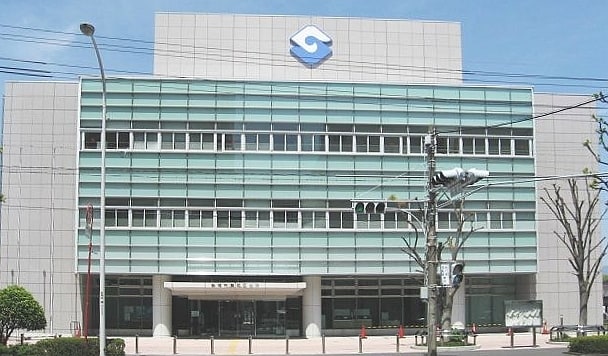
Also known as: 駿河区
Suruga-ku is one of three wards of Shizuoka, Shizuoka, Japan, located in the southern part of the city. The north east of Suruga-ku faces Aoi-ku; the north west faces Shimizu-ku; the south west faces Yaizu city and south east faces Suruga Bay.
Suruga-ku was created on April 1, 2005 when Shizuoka became a city designated by government ordinance (a "designated city"). It consists of the area of Shizuoka prior to its merger with Shimizu, south of the Tōkaidō Main Line rail tracks. As of 1 December 2019, Suruga-ku had a population of 210,684, with a land area of 73.06 km² and a population density of 2,884 persons per km².[10]
Jing gang shi min wen hua hui guan

Concerts and shows, Theater